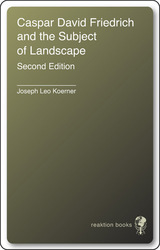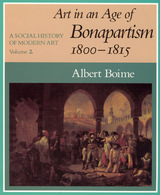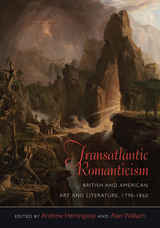
Caspar David Friedrich (1774–1840) is heralded as the greatest painter of the Romantic movement in Germany, and Europe’s first truly modern artist. His mysterious and melancholy landscapes, often peopled with lonely wanderers, are experiments in a radically subjective artistic perspective—one in which, as Freidrich wrote, the painter depicts not “what he sees before him, but what he sees within him.” This vulnerability of the individual when confronted with nature became one of the key tenets of the Romantic aesthetic.
Now available in a compact, accessible format, this beautifully illustrated book is the most comprehensive account ever published in English of one of the most fascinating and influential nineteenth-century painters.
“This is a model of interpretative art history, taking in a good deal of German Romantic philosophy, but founded always on the immediate experience of the picture. . . . It is rare to find a scholar so obviously in sympathy with his subject.”—Independent

Heavily illustrated, this volume is an invaluable social history of modern art during the Napoleonic era.
Stimulating and informative, this volume will become a valuable resource for faculty and undergraduates.—R. W. Liscombe, Choice

In the book's introduction, Andrew Hemingway—building on the theoretical work of Michael Lowy and Robert Sayre—proposes that we need to remobilize the concept of Weltanschauung, or comprehensive worldview, in order to develop the kind of synthetic history of arts and ideas the phenomenon of Romanticism demands. The essays that follow focus on the London and New York art worlds and such key figures as Benjamin West, Thomas Bewick, John Vanderlyn, Washington Allston, John Martin, J. M. W. Turner, Thomas Cole, James Fenimore Cooper, George Catlin, Edgar Allan Poe, Harriet Beecher Stowe, and Herman Melville. Taken together, these essays plot the rise of a romantic anti-capitalist Weltanschauung as well as the dialectic between Romanticism's national and international manifestations.
In addition to the volume editors, contributors include Matthew Beaumont, David Bindman, Leo Costello, Nicholas Grindle, Wayne Franklin, Janet Koenig, William Pressly, Robert Sayre, William Truettner, Dell Upton, and William Vaughan.
READERS
Browse our collection.
PUBLISHERS
See BiblioVault's publisher services.
STUDENT SERVICES
Files for college accessibility offices.
UChicago Accessibility Resources
home | accessibility | search | about | contact us
BiblioVault ® 2001 - 2024
The University of Chicago Press









